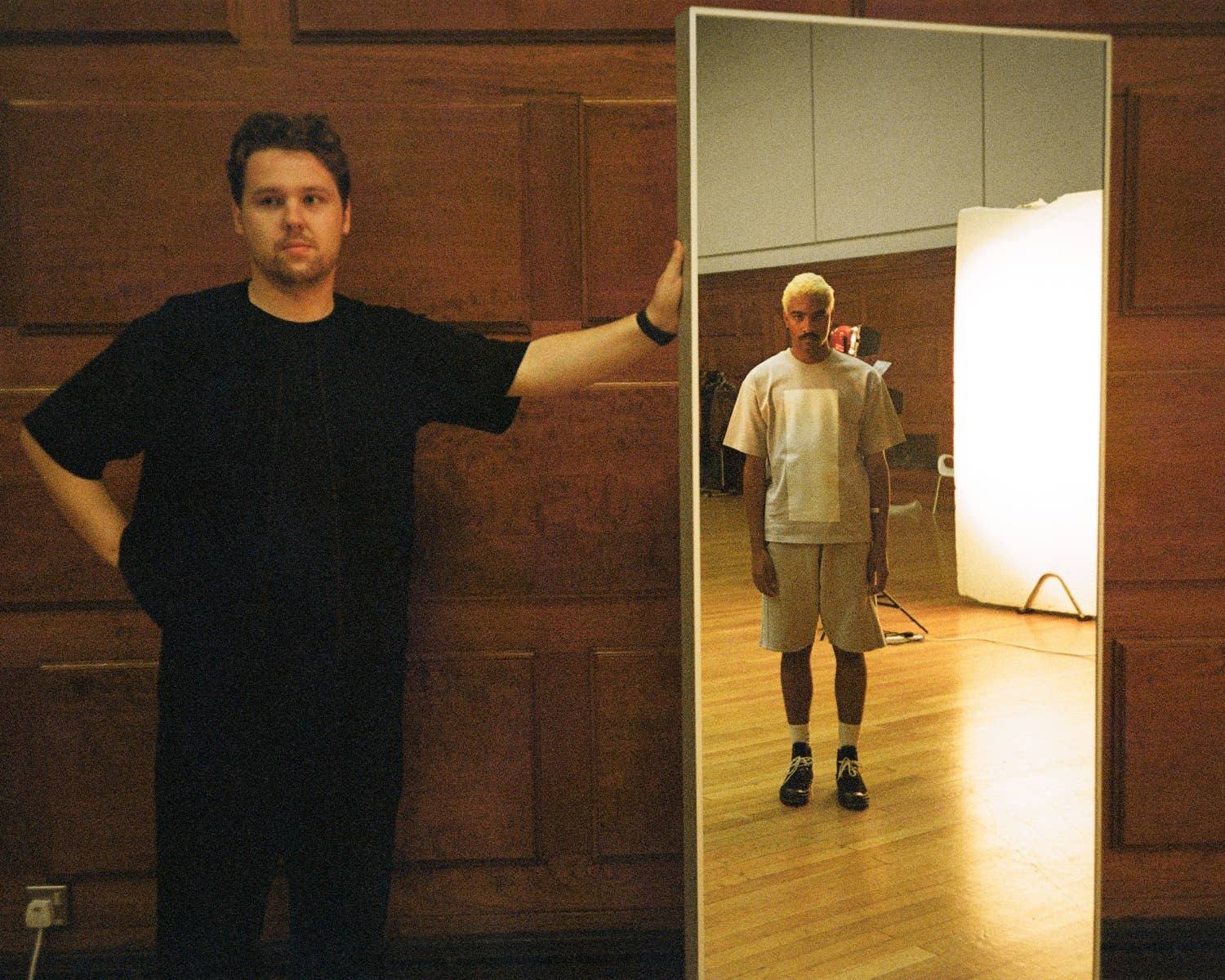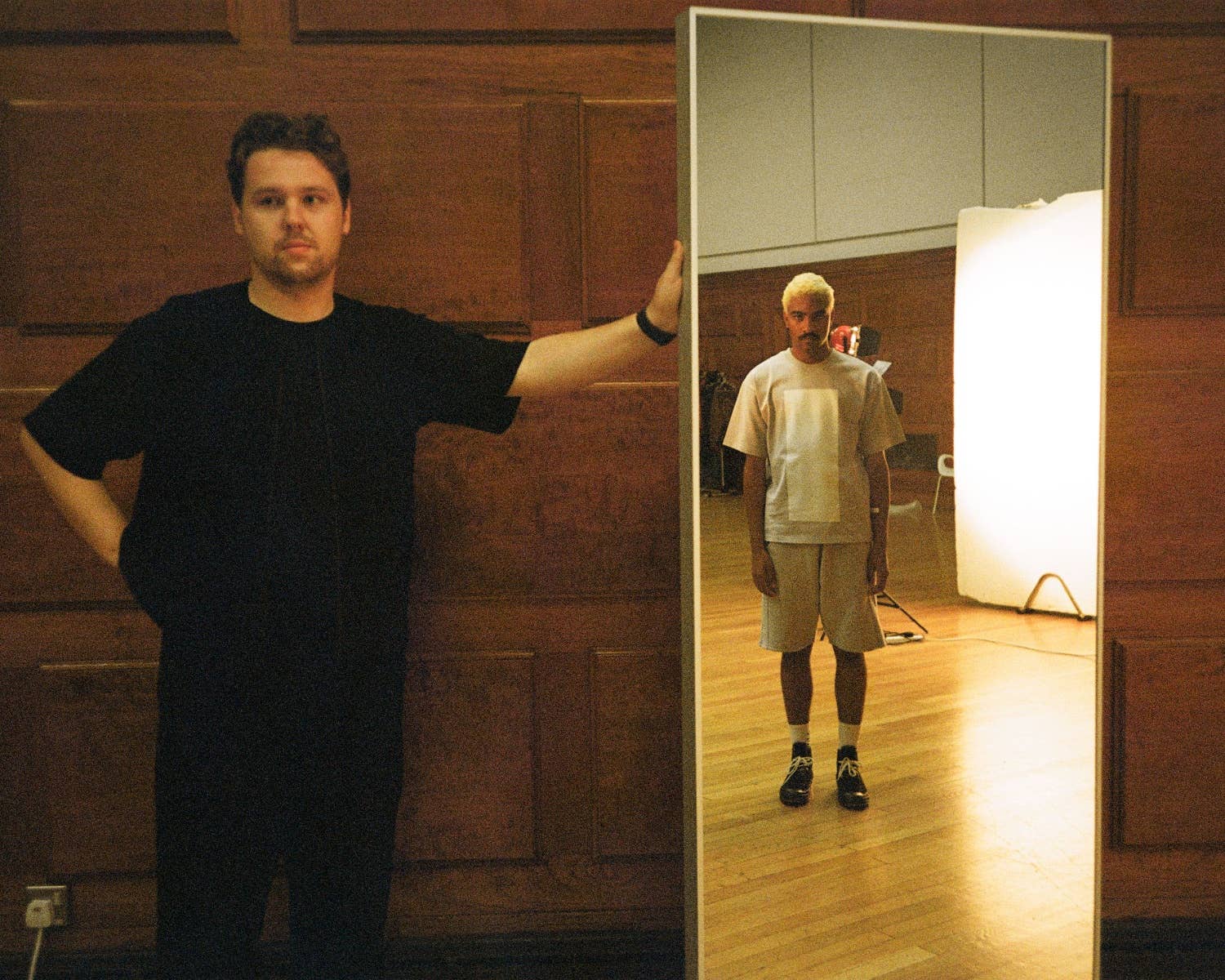
When you see a brand appear on Complex UK’s style pages, you’re likely to assume it falls under the ‘streetwear’ category, however AELIZA founder Jack Harper is on a mission to prove his brand is anything but. This is no slight to the streetwear scene, but that sort of pigeon-holing is what Harper is trying to get his imprint to sit directly opposite to.
AELIZA seeks to ask questions to their audience at every interval and product drop, with their mission statement, “What Does It Mean To Be A Free Individual?”, emblazoned on every garment. It’s clear when talking to Harper that AELIZA is all about a progressive sense of discovery rather than just a brand that follows the hyped styles or conventional patterns of the day.
This philosophical, psychological approach to clothing was undoubtedly fostered from Harper’s work as a designer with Samuel Ross at A-COLD-WALL* and what resonated with Virgil Abloh, whom he worked with on an Off-White x Nike x @arch_itecture project earlier this year. Having such an anthropological outlook underpins all of his work so far, and AELIZA is a continuation of that conversation. “You can’t put a price on a mindset, but you can on a lifestyle,” Harper says. “I want to encourage a mindset.”
Getting to know more about the brand following their first full drop and why they should be on your radar, we caught up with Jack Harper for a candid chat about why the brand is striving to be anything but streetwear, the importance of vulnerability, and the beauty of rediscovery through his imprint.
Behind the scenes photography by Kemka Ajoku.
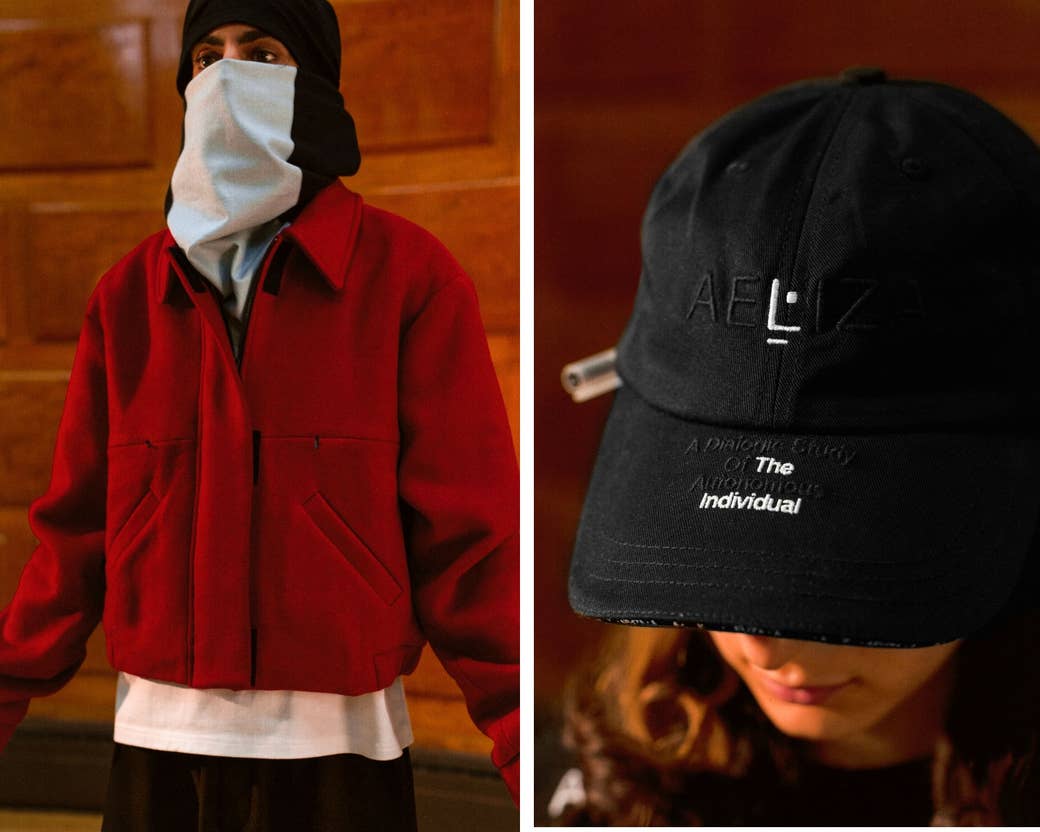
COMPLEX: What is AELIZA?
Jack Harper: AELIZA was born out of disillusion and uncertainty. We’re not an eccentric platform that endeavours in statement-heavy pieces—we’re a platform seeking essentialist communication, looking to use fashion as a facility for open conversations and questions that we have about humanity. Psychology and philosophy are at the core of our brand, and we don’t look to be the loudest in the room. We don’t look to be right, either. We look to be effective and concise. We are a mirror, which is why a mirror was central to the first lookbook.
You’ve presented AELIZA as “a dialogic study of the autonomous individual.” Could you explain what the purpose of doing that is?
This is our subheading to the headline; it’s our mission statement. To simplify it, it reads: “What does it mean to be a free individual?” That’s a really big fucking question! When I was asking myself this question, the first thing you think is, “Where on earth do I start?” It was upon realising that instead of dwelling on the question, it was time to start a project that facilitated this question. I’ve wanted to start a project for as long as I can remember, however I really struggle pursuing creativity without reason. If there’s no reason, then I put it aside.
Talk to us about the process behind setting up the imprint—why did you want to it in the first place?
It’s extremely difficult to summarise in short, as there are many reasons. There was certainly a lot of industry frustration that built up into this—AELIZA being the reaction. I felt like my frustrations needed to be proactive rather than sitting there moping about it. I had the idea for roughly four years. The case study behind the name was based off an early computer program titled ‘ELIZA’ by a computer scientist at the MIT called Joseph Weizenbaum. AELIZA was part of my dissertation at university, for context. Without getting too wordy, you’d write into the computer program in the same way as you’d talk to any individual.
The computer would simply write back exactly what you said but into the format of a question. From this, you’d get endless dialogue with something that doesn’t actually know what you’re saying. But as you can establish that you’re not talking to another human being but a computer, you somewhat feel secure and safe, free of judgement and scrutiny. I thought that it was fascinating, but also the sad reality of humanity: we only really feel secure with ourselves. I felt that, in fashion, there needed to be a brand that focuses on one’s mental, one’s self. Not in a way that’s provocative, but in a way that’s peaceful and gentle—it’s borderline therapy, to a degree.
Over time, I became increasingly engrossed with being able to facilitate this into the fashion and design format, but instead of a computer program, I tried to translate this vision and feeling into fashion, product design and visual communication. When the pandemic hit, it forced me to slow down but, fortunately, the benefit to that happening was finally being able to accumulate all the individual thoughts I had throughout the years and come up with the case study for what I wanted to do.
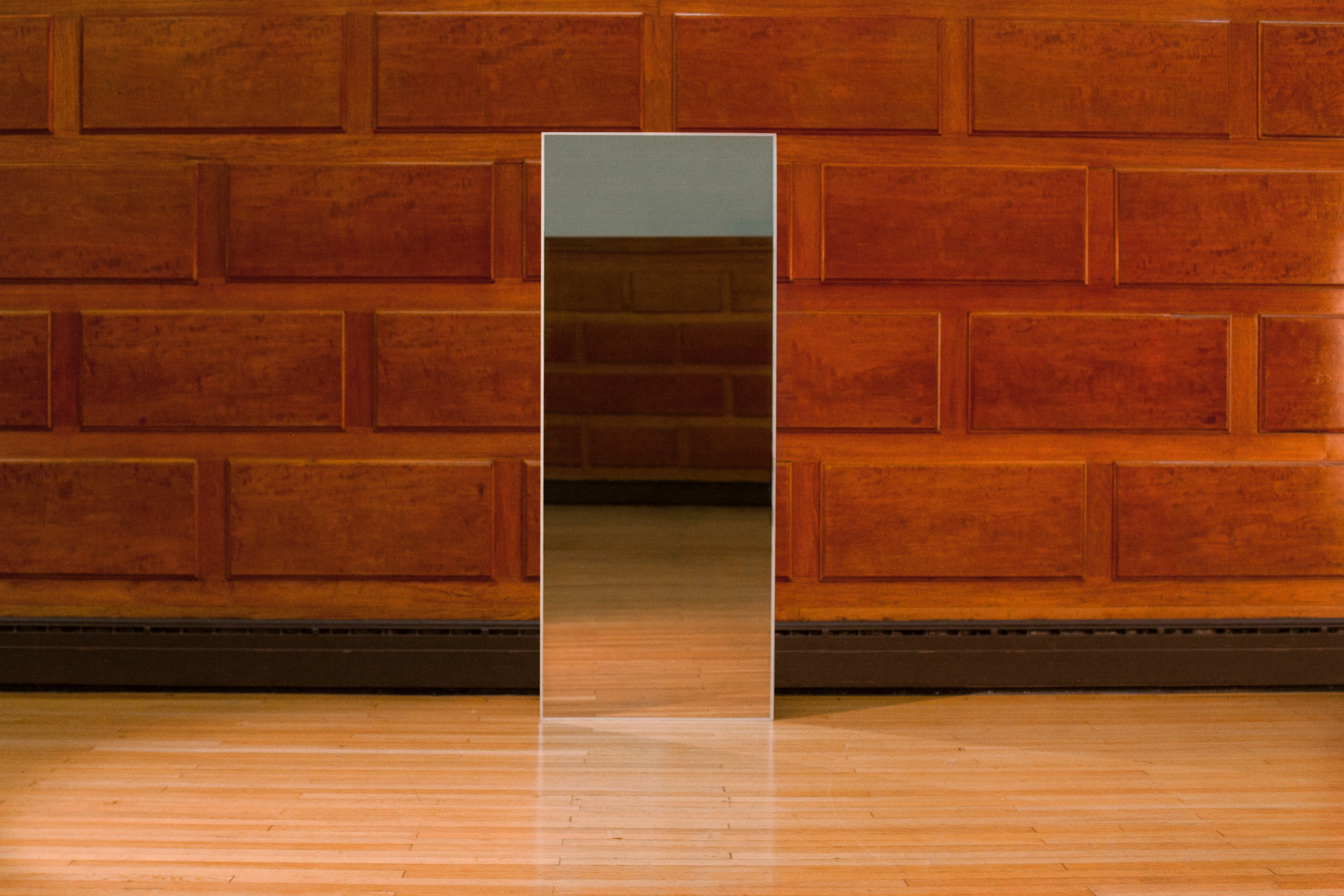
You touched on where the name AELIZA came from, but how did you go about creatng a logo and brand identity for it?
I spent about four months, on and off, designing the logo which is a custom type. The first T-shirt I designed was the Hovet Mirror, which is now look two in the collection. I was just asking myself: “How and where can these all be facilitated?” But that time spent was worth it. The logo can be broken down, meaning by meaning; designing it that way was the first time I’ve properly gone that deep into my own work rather than someone else’s.
The individual symbol came about one night when I felt there needed to be something extra that was free from words; it’s more of an emoji or hieroglyphic style. It symbolises the humanity aspect of the case study. I’m usually impatient with design, but AELIZA changed it all for me. I like looking at it with fresh eyes, one month at a time.
What are some of the central influences behind the brand, and yourself?
In all honesty, just experiencing life and taking it as it comes. I feel like at a younger age, I deprived myself from making the most out of certain moments because I was obsessed about the person I wanted to be in the future. But that thought process comes from an unhealthy place. I believe it’s important to share a level of vulnerability as a man. Without going into too much detail, when I was younger, I did experience abuse from a close family member for pretty much my whole childhood. Funnily enough, in the long-term, that hasn’t affected me so much. I’ve moved on from it.
What affected me is that people used that individual as an example of what a failure is to me. So when I was misbehaving as a child, I’d get comments like, “You’re just like him!” and “You’re gonna grow up being just like him!” That was horrible and resulted in me restraining myself from experiencing life. I don’t even think Nosa, my right hand, knows about this yet.
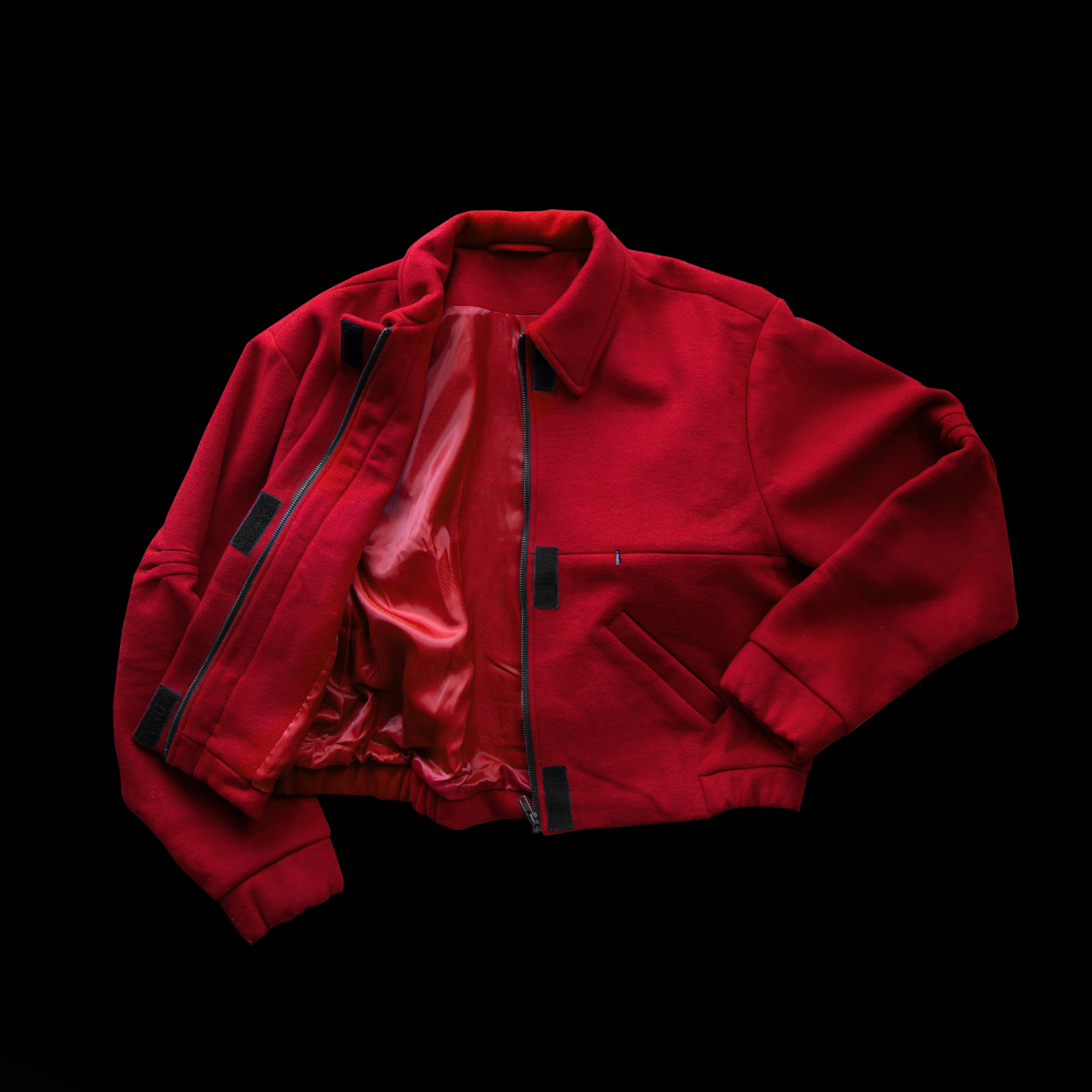

Who are the key figures that have inspired your work?
I’ve been extremely lucky to work with people who have massively influenced me. To work under Samuel Ross for two years, that inevitably embedded in me—he taught me the ropes. Virgil is such a massive connoisseur of culture and is really open-arms with new people working with him. I was extremely lucky to shoot for him for the Nike x OFF-WHITE Rubber Dunk he released a year ago. He’s such a lovely person to work with.
Going away from the obvious design influences, the three influences that stand out are Adam Curtis, Anthony Bourdain and Burial. Three people from different fields, but I feel they hit this ground that I feel no others do. Adam Curtis’ method of filming is unique to me. Hypernormalisation stands out, in particular, due to the overwhelming amount of information he’s throwing at you throughout. He’s not telling you “this is right” or “this is wrong.” He provides you with information and pretty much says, “Here you go! Take it and accumulate your own conclusion on what I’ve given.” His work fits in the middle between chaos and order which I perceive to be consciousness.

People will be quick to assume this is just another streetwear brand—why do you believe AELIZA is different?
This depends on the entry point you come from. If you’re an individual that consumes and/or has an avid interest in streetwear fashion, then I can understand the perspective. However, why box it in like that? You can’t be boxed if you don’t perceive the box to exist at all. “Streetwear” isn’t a term that sits well with me anyway. I feel like it’s incredibly outdated—AELIZA’s focus is completely different.
I don’t aim to cultivate, I aim to resonate. I don’t aim to build a community. Why does every brand say this? It’s become such a diluted term and has lost its meaning. I will never exploit anyone with the sole intent to sell a product. I prefer the idea that AELIZA is about a mentality. It’s more ethos-wear than streetwear. It’s a seamless definition that fits into any fashion sector, encouraging us to release more meaningful products. We need to get past this idea that creativity is solely about expression—it’s also about responsibility for the products we release into the world.
You can’t put a price on a mindset, but you can on a lifestyle. I want to encourage a mindset, but who am I to say what community to be a part of? I just want people to embed their mindsets into their own lives as an individual. That’s true autonomy. That, to me, is why we’re not only different, but we also stand out. It goes beyond the physical; its focus is the psychological and philosophical.
You’re about to release of your first full collection after a steady release of individual drops. Talk to us about this process and why you’ve built it up like this.
I’m not trying to come out with something that has a singular tagline with AELIZA. I think very deeply about things, so there’s gonna be nothing less than that. It’s no different to a symphony; layers of audio which accumulates to your favourite song. I see AELIZA as that, ultimately. I felt that individual drops were a good way to introduce people into the idea, and it’s worked well in our favour so far. Just to be consistent and specific was important.
To start off with a rug release, then gloves—who does that? But internally, it’s helped us just figure out the brand image we want; it’s kept the growth nice and steady. At the end of the day, I’ve always hated products being released for the sake of it—that’s just creative pollution. The avant-garde is not the clothes, it’s the ethos and concept. I feel that AELIZA, as an overall idea, is fairly new—no one has tried to pursue fashion like this. But with that being said, it will take time for people to open up to it. This is the most sustainable way to do so.

You shot the collection in Lambeth Town Hall because of its history as a forum of conversation. Why did you decide to do this?
It goes back to the word ‘dialogic’ in our mission statement. We wanted a space that lightly resembled an assembly hall space because it’s somewhat nostalgic, like we were all in school. The location, specifically, is close to me as I’m from Brixton. I haven’t lived there since I was 8, but Brixton is home for me. The idea of this shoot was to field the lens of the camera coming from the viewpoint of the participant, whilst the models and the clothes are the case study and lecturers. Those factors mixed together equals a conversation amongst all.
I wanted the lecturer to have no more power than the audience. They are there to have a conversation with you, rather than saying what is right or wrong. I can’t lie: I enjoyed education, even when I found it difficult. The nuances of education and that process were what I wanted to showcase here and moving forward.
What’s the deal with the AELIZA Truth Instagram page? Why is it important for you to have people help influence your journey as a brand?
Me and Nosa have really been trying to figure out how we express ourselves more fluently without diluting the output. As we’re closing into a year now doing AELIZA, we’ve looked back and thought, “Wow! There’s so much we could’ve shown of value that people would have really appreciated. How can we facilitate this?” We came up with the AELIZA TRUTH page to fulfil intentions, exactly. There’s so much context that has value and is worth sharing. That level of transparency I didn’t personally have when I was growing up, aspiring to be a designer. I want that to change. It’s recently been a really good space to share opinions with confidence and without criticism. We hear, and we listen.
I’ve had a lot of conversations with people directly because of the page and I’ve learnt an awful lot due to everyone’s perspectives beyond my own. Ultimately, this helps the output of AELIZA not come from one person but a whole group of individuals in a decentralised manner. There’s a reason why it’s not “AELIZA C/O Jack Harper”. AELIZA needs to represent humanity. It needs to be a mirror and a facility.
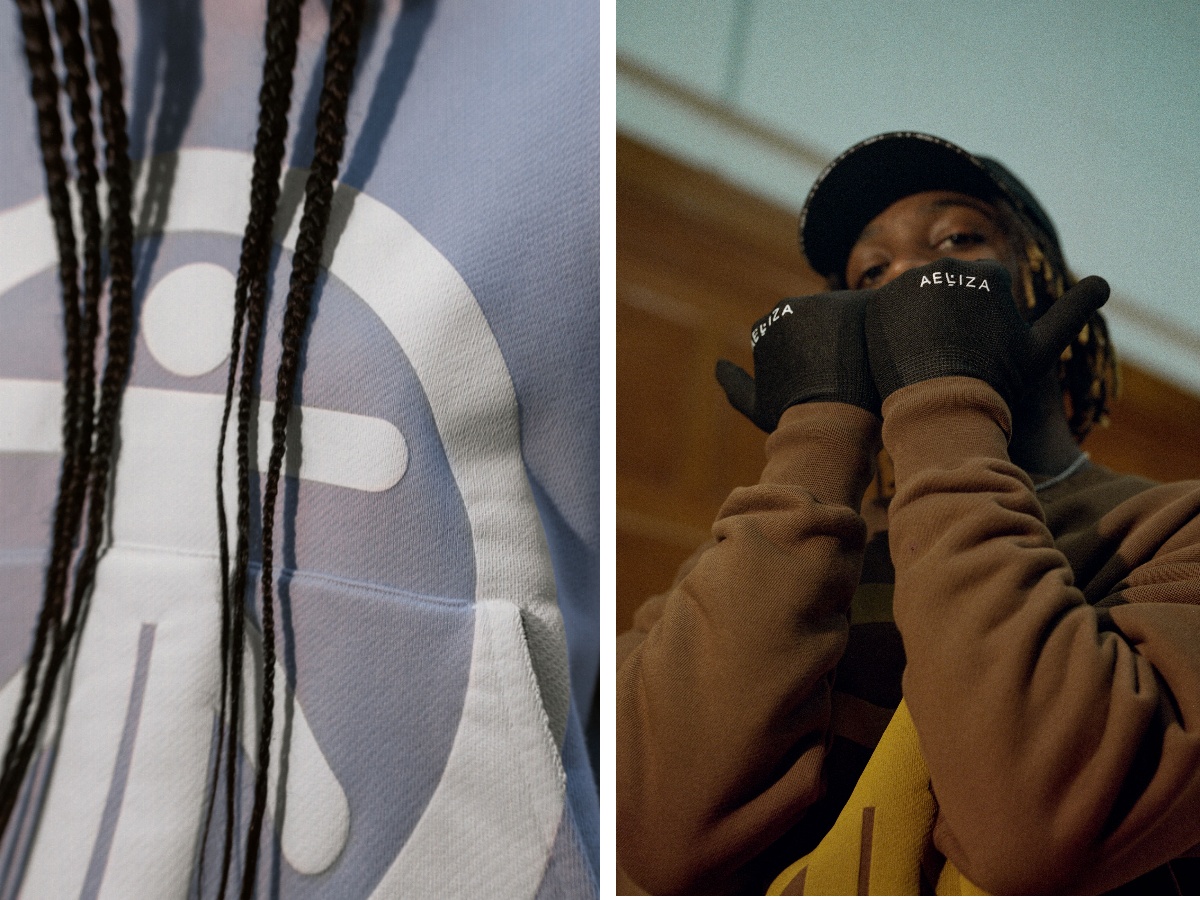
Who are some the people you’ve worked with on this collection, and why are they an important part of the journey?
Most importantly, I run AELIZA with Nosa—that’s my right hand, my best friend. We’re in this together. He’s a great thinker and an even greater human being. Nosa understands the business and the culture of it all, and we have the utmost trust in each other. What more can you ask from a friend? What I’m most grateful for, is that if AELIZA goes the place we want it to go, we can share that experience together. It’s nice for this whole process to not be a lonely one.
Eastwood Danso, a great friend of mine, styled the collection. We’ve known each other since the A-COLD-WALL* days. There’s just a mutual respect there for what each of us does. We always call each other when we need to vent our frustrations and ask each other for advice. We just really care about this shit; that passion is important and that’s why I trusted him to take the helm. I gave him no direction—I just wanted Eastwood to be able to own it in any way he felt suited. I strive for precision but inclusivity at the same time.
Rei, who I also met through ACW*, he helped me start off by working on the garment patterns together. Again, there is a real mutual respect for one another. We’re so incredibly different as people, but that’s what makes our relationship work. We offer a different perspective that can be trusted. Andy, who shot the collection, we’ve worked with each other previously on some side projects and became good friends through that. He’s a great individual with a great future. Tyler and Arun and I went to college together and just stayed in touch since; Seda and I went to university together; Joanna and Kemka are Nosa’s close friends; and Vinch and Ash used to be my housemates.
Everyone involved, we know each other extremely well. We’re all connected and all care about the project. We all share this unique perspective which I believe should be recognised. Everyone that was there wanted to be a part of it, and for that, I’m grateful. That, to me, is the true authenticity of AELIZA.

What do you want to achieve with your debut collection?
We didn’t have a set goal, apart from just being able to really introduce ourselves, the case study and garments beyond the outright obvious. Me and Nosa are just relieved to have this out into the world. I think INTROSPECT sets a great standard. It’s massive progress to what we’ve made so far, and we’re happy that the ethos and the case study is correlating with the design decisions that are being made. AELIZA is slowly coming together and people are beginning to appreciate that.
What’s next for AELIZA?
We’re still building our foundations. A lot is yet to be done, but the most important part is that myself and Nosa are enjoying it. For the first time ever, I’m at peace with life and the process of building something. I’m just happy to be here doing it! There’s a solid plan in place for the next three years, so we just have to run it now and enjoy the process.
Head to the AELIZA website to take in their debut ‘INTROSPECT’ collection in full.

